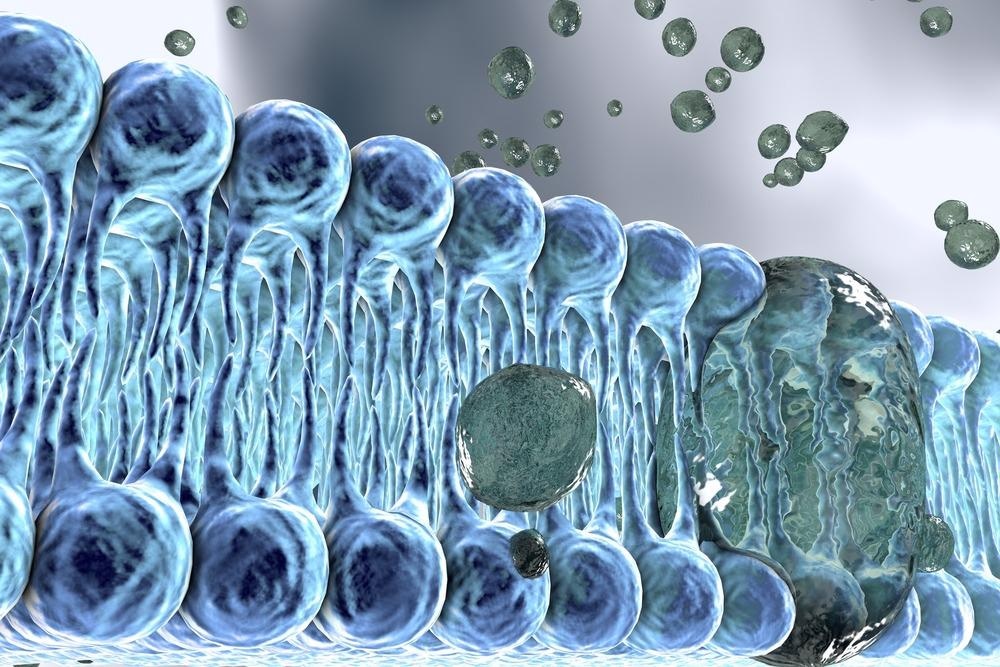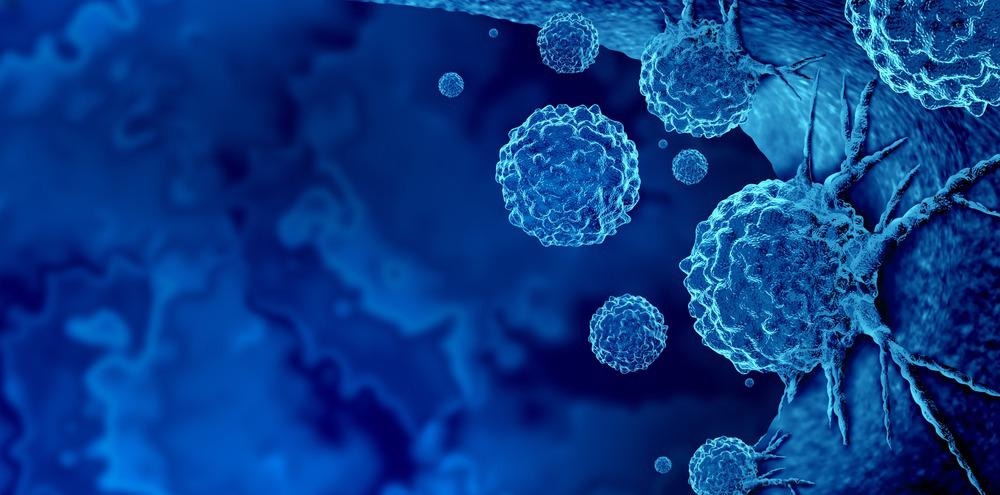Cell polarity is important because it plays a critical role in cell development and function. A prime example is epithelial cells, which utilize apical-basal polarity to provide a barrier function against pathogenic agents. Another hallmark example is cell migration which requires cells to exhibit front-to-back polarity and allow them to adhere to, and detach from, the extracellular matrix.

Image Credit: Kateryna Kon/Shutterstock.com
Polarity is also necessary for neurons to perform the propagation of action potentials and send messages from the central nervous system to peripheral body parts.
The morphology of cells has been optimized for function, such as propagating a signal through an axon to direct the shape of epithelial cells to allow for selective transport of solutes. This polarity creates a distinct shape, allowing different cell types to carry out their function of migrating or initiating responses, for example, an immune response.
Cells containing compartments, such as epithelial cells, must be polarised to maintain the cellular contents in their correct partitions. Epithelial cells have the property of apical-basal polarity that enables the specialized trafficking of solutes. They also possess planar polarity for organogenesis.
The apical-basal polarity arises because of cell-extracellular matrix and cell-cell interactions; tight junctions between cells obstruct protein and ion flow between the apical and basal faces, thereby creating a barrier to prevent the movement of unwanted material. The development and maintenance of cell polarity result from multiple signals produced by polarity proteins, epithelial, and focal adhesion contact with the extracellular matrix.
These interactions call for signals which change the cytoskeleton dynamics and aid in localizing organelles. If these signals are lost or inhibited, differentiation from epithelial to mesenchymal cell types and front to back polarisation occurs.
The Impact of Polarity on Cell Function
Several published works demonstrate the role of cell polarity on cell function. Advances have aided these in microfabrication techniques, enabling systemic studies of cell polarisation.
The Impact of Cell Polarity on Asymmetric Division
Fate determinants are vital proteins that determine the identity of a cell's fate. Uneven distribution of these fate determinants, including Numb, Brat, PAK, and aPKC, may lead to asymmetric cell division. Both internal and external signals control cell divisions. Symmetric divisions result when there is an equal distribution of proteins, cytoskeleton, and organelles in the mother cell, creating two progenitor daughter cells with the same fate.
Asymmetric divisions through intrinsic signaling result in unequal distributions of fate determinants and proteins, resulting in progenitor daughter cells with different cell fates. The extrinsic mechanism causes symmetric cell division; however, daughter cells receive different micro-environment signals that cause diversity in cell fates.
The Impact of Cell Polarity on Development Differentiation
When they have been unevenly distributed, key polarity proteins result in asymmetric cell division and the differentiation of progenitor cells. This activity, along with the body axes of an organism, is essential for forming functional wings, ears, eyes, and other organs.
The Impact of Cell Polarity on Cancer
Polarity contributions heavily influence cancer initiation because of an increased incidence of asymmetric division. Moreover, cells become increasingly migratory, which progresses the disease and facilitates metastasis; the upregulation of cdc42 primarily causes this. This factor is upregulated in most cancer cell types, and it is integral in the metastasis process.
Several studies involving knockouts of cdc42 have demonstrated the cdc42 requirement for metastasis; optimistically, they suggest mechanisms by which this factor can be controlled.

Image Credit: Lightspring/Shutterstock.com
The Impact of Cell Polarity on Immune Responses
Protein polarisation and fate determinants regulate T lymphocyte differentiation to effector or central memory cell types during early encounters with antigens. Aside from differentiation/ cell fate, several studies have implicated several factors that regulate morphology and migration.
For example, T cells are exposed to antigen by dendritic cells – this results in aPKC and Par3 proteins moving distally to the dendritic cell and the two important polarity proteins that form the Scribble complex, Scribble and Discs large (Dlg) to be localized proximally.
Planar Cell Polarization
This type of cell polarisation is more complex as it does not result directly from cell-to-cell contact and is a function of the cell's position concerning the axis of the organism's body. This form of polarity results in the organization of feathers on a bird and the orientation of drosophila wings. As a result of disrupting planar polarity, the development of critical organs and systems such as the eye or the inner ear is attenuated, resulting in blindness or deafness, respectively. This demonstrates how polarity is implicated in cell function and how an absence of appropriate polarisation can harm the organism.
An Example of the Development of Cell Polarity – Neurons
Neurons are an illustrative example of how cell polarization is necessary to instigate and preserve cellular function. Neuronal development in vitro commences with the spreading of appendages known as filopodia. These grow into small neurites; one of these is subsequently selected to become the axon and starts to grow more rapidly relative to other neurites. The remaining neurites become dendrite, and they are polarised.
The process observed in vitro is different from that of in vivo and occurs from signaling from secreted factors and complex formation. For example, the Par6-Par3-aPKC is important in asymmetric division and development of Drosophila melanogaster. Other important factors that contribute to polarisation include cell division control homolog 42 (Cdc42), the Ras homolog gene family, member A (RhoA), and Ras-related C3 botulinum toxin substrate 1 (Rac1).
The critical impact of cell polarisation has been evidenced extensively as a result of observing detrimental diseases caused by its dysregulation. A lot of the knowledge that has been gathered about cell polarity and the function of cells has been limited to using model organisms such as Caenorhabditis elegans (C. elegans) and Drosophila melanogaster (D. melanogaster), which has been fundamental in attempting to understand mammalian development and structure-function relationships as many mechanisms are conserved between these model organisms on complex mammalian organisms.
Sources:
- Piroli ME, Blanchette JO, Jabbarzadeh E. (2019) Polarity as a physiological modulator of cell function. Front Biosci (Landmark Ed). doi:10.2741/4728.
- Shamloo A, Ma N, Poo MM, Sohn LL, et al. (2008) Endothelial cell polarization and chemotaxis in a microfluidic device. Lab Chip. doi: 10.1039/b719788h.
- Pham K, Sacirbegovic F, Russell SM. (2014) Polarized cells, polarized views: asymmetric cell division in hematopoietic cells. Front Immunol. doi: 10.3389/fimmu.2014.00026.
- Knoblich JA. (2010) Asymmetric cell division: recent developments and their implications for tumor biology. Nat Rev Mol Cell Biol. doi: 10.1038/nrm3010.
- Nelson WJ. (2009) Remodeling epithelial cell organization: transitions between front-rear and apical-basal polarity. Cold Spring Harb Perspect Biol. doi:10.1101/cshperspect.a000513.
- Schneider SQ, Bowerman B. (2003) Cell polarity and the cytoskeleton in the Caenorhabditis elegans zygote. Annu Rev Genet. doi: 10.1146/annurev.genet.37.110801.142443.
Further Reading